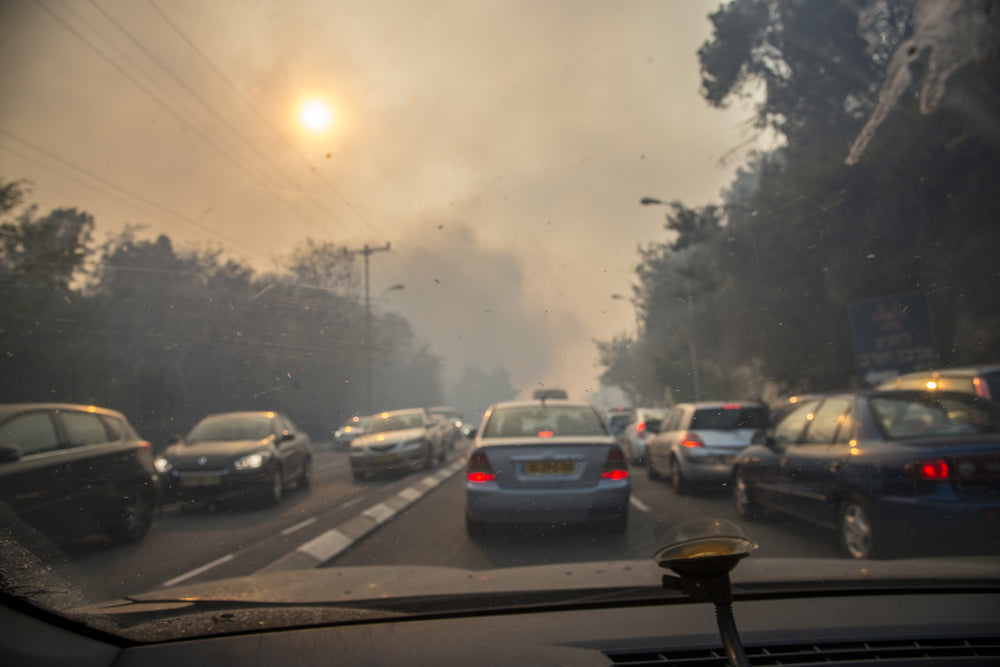Free U.S. Shipping On Orders Over $150

6 Wildfire Safety Tips When Planning a Trip
Posted on
Dozens of wildfires are currently ravaging parts of the United States and Canada with one of the largest ones having destroyed an area bigger than Los Angeles.
If you are planning any trips this summer, you need to include wildfire safety in your planning. And it doesn't matter if there’s no wildfire close to where you’ll be. As we discussed in a recent post, wildfire smoke is also a major hazard and it can travel thousands of miles.
Here are some wildfire safety tips when traveling.
1. Research Where The Wildfires Are
Before you even begin packing, check that your chosen destination is safe to go to. In addition, check whether there are any wildfires along the way if you’ll be driving.
You definitely want to avoid locations with active wildfires. Even places that are closeby are risky since wildfires can spread rapidly.
That’s not to mean you cancel your entire trip to California because of the Park fire. Find out specifically which area is affected. For instance, the huge Park fire is only in a particular area in Northern California.
Keep checking for wildfire updates even after you start your trip. A new fire can spring up or a current one may spread to a new area.
2. Pack Face Masks for Smoke Protection
It’s not just fire that you need to worry about; wildfire smoke is equally dangerous. It can cause breathing problems, trigger asthma attacks and worsen allergies.
Breathing in the fine particulates can also have long term health effects including an increased risk of heart disease.
You can use the AirNow government website to check the air quality of your destination. If it’s really bad, consider rescheduling or choosing another location.
But no matter where you decide to go, pack a couple of face masks. Remember that wildfire smoke can travel thousands of miles, meaning you can still breathe it in even if there’s no wildfire nearby. Our Aplu mask is perfect for traveling. It’s comfortable to wear for hours and is great for sensitive and acne-prone skin.
3. Be Flexible
Be ready to change your plans at the drop of a hat. Wildfire season makes travel unpredictable. Flights can get delayed, you may need to evacuate or the air can get bad enough that you can’t stay in a particular location.
So be flexible when making plans. Have at least two backup locations you can go to if your first choice doesn't work.
Flexibility also means being mentally ready to cancel your plans altogether and head back home if things seem dangerous.
4. Travel With an Emergency Kit
You probably won’t need it, but it’s a good idea to travel with an emergency kit during wildfire season. It doesn't have to be a ton of stuff that fills up your luggage. Just a few basics will do: flashlight, first aid kit, power bank, medications, food and water.
Having an emergency satellite messenger like the Garmin GPSMAP® 66i can also come in handy when mobile communications go down. A backup communication method is especially important if you are going outdoors. You can easily get trapped behind a wildfire and need to call for help.
5. Stay Informed
Throughout your trip, keep checking local news and government websites for up to date information on any wildfire hazards. That’s how you’ll know if you need to avoid a particular area, turn back or prepare for an evacuation.
6. Don't Take Risks
Finally, and most importantly, do not take any risks. It can be difficult to change or cancel plans you’ve had for months, but your life is more important.
If there’s even some risk that you might be in the path of a wildfire, get out or don’t even go in the first place.
If there is an evacuation order, get out early before things get worse.
If you are driving, stay on the lookout for worsening conditions. If there’s poor visibility, slow down or stop on the side of the road. And if it looks like things are getting worse, turn back or change direction.
Quick links
Contact
6063 Hudson Road #160
Woodbury, MN 55125
Yo@hercLeon.com
Leave a comment: